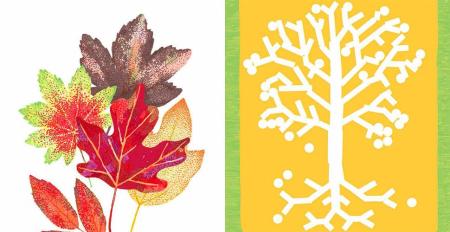
This month’s interviewee is Silvia Robertelli. Originally from Italy, Silvia is a designer and illustrator with extensive experience in communication in the environmental field; among other projects, she created the beautiful illustrations that accompany Network Nature communications.
Beyond work, her latest passions include singing in a Latin-American choir, experimenting with textile crafts, and hiking on the mountains.
Tell us about yourself! What role do nature and reading play in your life?
My name is Silvia Robertelli; I am an Italian graphic designer and illustrator, living and working in Brussels since 2020.
Nature plays a huge role in my life. I grew up in the immediate outskirts of the city: a pedestrian-only street cuts my home away from cars and traffic, and the place is immersed in nature: olive trees, vegetable gardens, spontaneous plants…
Wild nature is what I miss the most here in Brussels, and I spend as much time as I can in the parks we have. I especially enjoy reading in nature – a much-needed escape from the digital world to me.
Which book did you pick and why?
When I was invited to join the #NetworkNatureReads campaign, my gaze wandered across all the nature-themed books in my studio, from old botanical books to complex infographic ones.
One book stood out for its simplicity and poetic, universal strength: L’albero, by Silvana D’Angelo and Studio Fludd.
This (children’s) book is a poetic and scientific journey into the discovery of trees life. The figurative part is inspired by the tradition of naturalistic illustration, and is approachable, inviting and warm. The book is a poetic promenade, completed by an observation laboratory and a glossary.
I chose this book because I am aware of the importance of education and awareness in building a society that lives more in harmony with nature.
Can you share a specific moment from the book that resonates with you personally? How does it connect to your work with Nature-based Solutions projects?
Across the beautiful pages of the book, there is a constant movement from the macro to the microscopic dimension: from showing different shapes of trees, to different types of seeds, gems, pinecones…
This book shows in a very simple, yet not simplistic way, how everything is connected.
These are principles that I often apply in my own work.
In what ways do you see the themes or lessons from the book aligning with the goals of conservation and the challenges we face in combating biodiversity loss today?
“We protect what we love, and we love what we understand”, said Jacques-Yves Cousteau. This book invites to be fascinated by the smaller details from nature; to observe, annotate, draw; and this, from the younger age.
I believe this is the first step for the children of today to be a part of nature conservation and combat biodiversity loss.
If you were recommending this book to a colleague or a friend within the conservation community, what key takeaway or message would you highlight?
This book is in Italian (and just recently translated to Chinese!). Even if not everyone can read these languages, I liked the idea of recommending a book from a local, independent publishing house.
This leads to my takeaway: explore what local artists, poets, writers, small publishers are producing about nature. Attend events, presentations, book launches in your city. Celebrate diverse, local initiatives: small is meaningful.